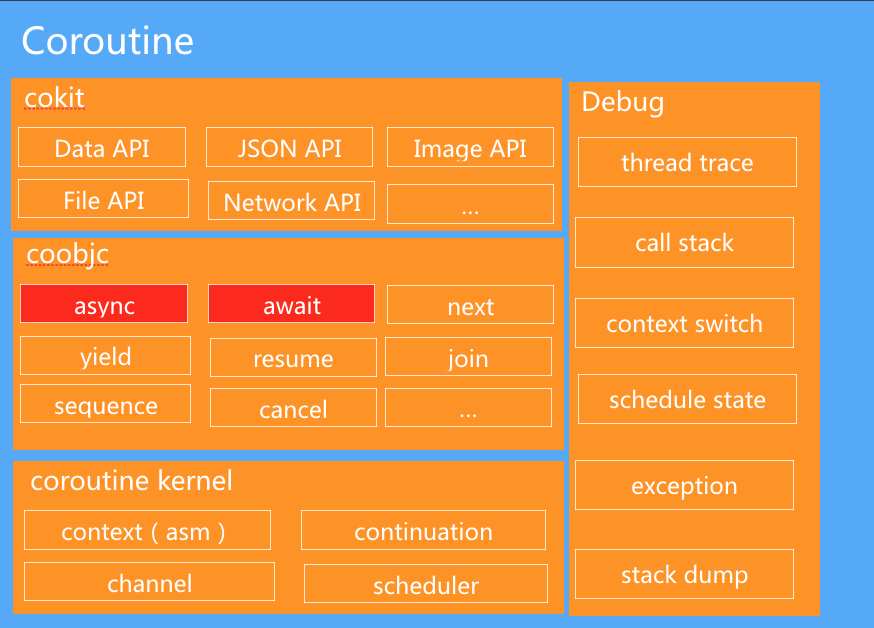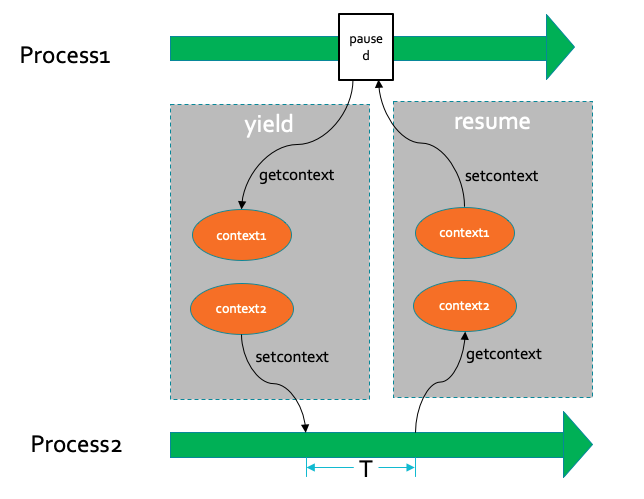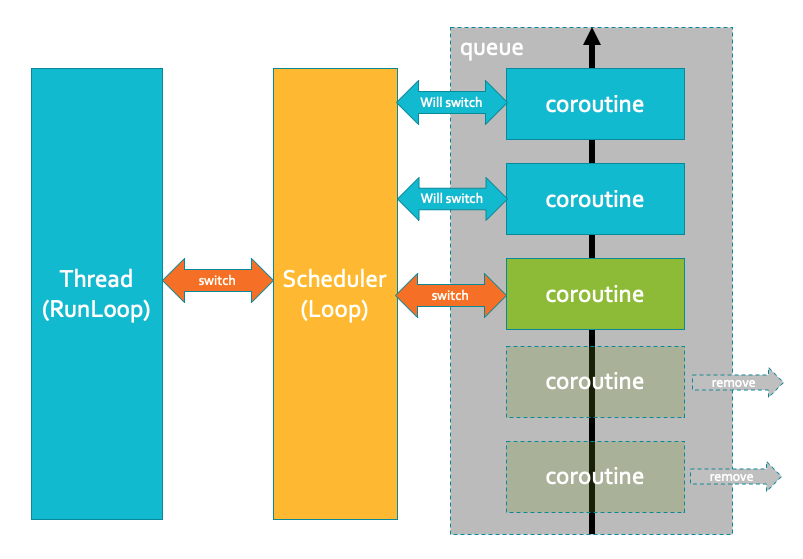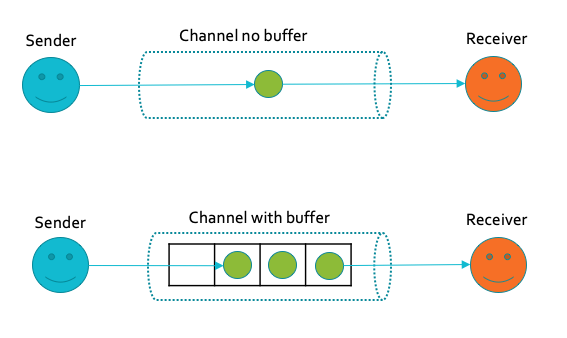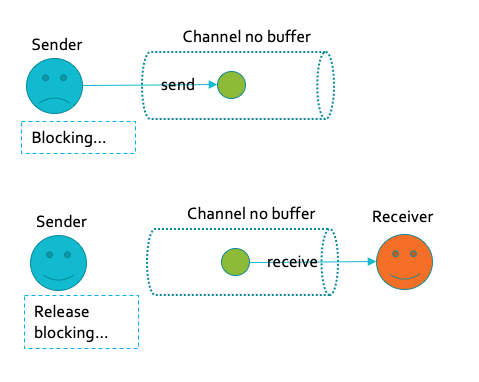开源信息
coobjc 是由手淘架构团队推出的能在 iOS 上使用的协程开发框架,所以大家在了解coobjc之前必须先了解什么是协程,说到协程必定让人想起和它相关的两个概念进程 线程
它的好处有哪些呢?
首先它可以以同步的方式写异步逻辑,可以避免“回调地域”现象,在性能方面调度性能更快,协程本身不需要进行内核级线程的切换,调度性能快,即使创建上万个协程也毫无压力。协程的使用以帮助开发减少锁、信号量的滥用。
整体架构 下面是coobjc的整体架构图:
底层是协程的核心,包括堆栈切换管理,协程调度,协程之间channel通信实现。 中间层是协程的封装,提供了 async / await , generator 和 Actor的支持 。 顶层是对系统库的一个扩展,是对Foundation 和 UIKit IO及其他耗时操作的封装
coobjec中每个协程都是可以暂停和恢复的,并且每个协程都分配一个单独的内存区域用于存储它的调用栈,它有四个状态分别是:READY RUNNING SUSPEND DEAD RUNNING SUSPEND
coobjc内部使用一个调度器来负责用户所有协程的调度,它实际上是通过一个协程队列来进行管理,调度器会不断从队列中取出协程去执行。一旦队列中没有协程可以执行的时候,会切换到线程执行。所以当我们需要执行某个协程的时候,我们只需要将协程添加到某个线程的调度器队列中就可以了。
话不多说我们来看下coobjc的具体用法:
coobjc 的使用 1 创建协程
coobjc可以在当前线程或者指定的queue创建协程,在哪里创建就会在哪个线程进行调度,当然还可以在指定的队列创建和运行协程。
co_launch(^{ // 默认在当前线程进行调度 }); co_launch_onqueue(q, ^{ // 在指定的队列中运行的协程 });
2 取消协程
在coobjc中协程是可取消的,ObjC不建议使用异常,所以coobjc中不使用异常来取消协程。要取消协程可以调用CCOCoroutine的cancel方法。通过co_isCancelled宏来查询当前协程是否被取消了。
CCOCoroutine *co = co_launch(^{ val ++; co_delay(1.0 ); if (co_isCancelled()){ return ; } val ++; }); [co cancel];
在调用cancel后,协程的内部代码将不再继续执行,协程的内存将会被释放。
3. COPromise用法
await主要用于避免回调地狱现象,有时候我们会遇到请求两个不相关的数据接口后,将最终的数据组合后作为最终数据返回。如果不借助await的话,只能分别串行请求后最后将数据组合,这样会显得很低效。借助协程可以同时并行执行然后将数据合并。
定义一个COPromise,在COPromise中通过fulfill 返回成功的结果,通过reject 返回失败的结果。返回的错误信息可以通过co_getError来获取。
fulfill
- (COPromise *)testPromiseFullfill { COPromise *promise = [COPromise promise] dispatch_async(dispatch_get_main_queue (), ^{ [promise fulfill:@"Hello coobjc!" ] }) return promise } co_launch(^{ id result = await([self testPromiseFullfill]) NSLog(@"result = %@" ,result) })
reject
- (COPromise *)testPromiseReject { COPromise *promise = [COPromise promise]; dispatch_async (dispatch_get_main_queue(), ^{ [promise reject:[NSError errorWithDomain:@"COPromise" code:-100 userInfo:nil ]]; }); return promise; } co_launch(^{ id result = await([self testPromiseReject]); NSError *error = co_getError(); if (error) { NSLog (@"Error = %@" ,error); } else { NSLog (@"result = %@" ,result); } });
fullfill && reject
- (COPromise *) testPromiseRejectFullfile { return [COPromise promise:^(COPromiseFulfill _Nonnull fullfill, COPromiseReject _Nonnull reject) { dispatch_after(dispatch_time(DISPATCH_TIME_NOW, (int64_t)(2 * NSEC_PER_SEC) ), dispatch_get_main_queue() , ^{ fullfill(@"Say Hello To Coobjc" ) ; }); }]; } co_launch(^{ id res = await([self testPromiseRejectFullfile]); NSLog(@"result = %@" ,res); }) ;
cancel
- (COPromise *)testPromiseCancel { COPromise *promise = [COPromise promise] dispatch_async(dispatch_get_main_queue (), ^{ [promise cancel] }) return promise } co_launch(^{ COPromise *promise = [self testPromiseCancel]; [promise onCancel:^(COPromise * _Nonnull promise) { NSLog(@"isCancel" ) }] [promise catch:^(NSError * _Nonnull error) { NSLog(@"NSError"); }]; id res = await(promise); if(!res) { NSError *error = co_getError() BOOL isPromiseCancel = [COPromise isPromiseCancelled:error ] NSLog(@"isPromiseCancel %ld" ,isPromiseCancel) return } NSLog(@"result = %@" ,res) })
then
co_launch(^{ COPromise *promise = [self testPromiseFullfill]; COPromise *thenPromise = [promise then:^id _Nullable(id _Nullable value) { return [self testPromiseThen]; }]; id res = await (thenPromise); if (!res) { NSError *error = co_getError(); BOOL isPromiseCancel = [COPromise isPromiseCancelled:error]; return ; } NSLog(@"result = %@" ,res); });
批量等待
co_launch(^{ NSArray *batchFullfile = batch_await(@[ [self testPromiseFullfill02], [self testPromiseFullfill03], ]); if(batchFullfile && batchFullfile.count) { NSLog(@"%@" ,batchFullfile); });
我们来看下COPromise的一些关键属性和方法:
关键属性:
@property (nonatomic , readonly ) BOOL isPending;@property (nonatomic , readonly ) BOOL isFulfilled;@property (nonatomic , readonly ) BOOL isRejected;@property (nonatomic , readonly , nullable ) Value value;@property (nonatomic , readonly , nullable ) NSError *error;
关键构造方法:
/** Create a promise without constructor . Which means, you should control when the job begins. @return The `COPromise` instance + (instancetype)promise; /** Create a promise with constructor . the job begans when someone observing on it. @param constructor the constructor block. @return The `COPromise` instance + (instancetype)promise:(COPromiseConstructor)constructor; /** Create a promise with constructor . the job begans when someone observing on it. @param constructor the constructor block. @param queue the dispatch_queue_t that the job run. @return The `COPromise` instance + (instancetype)promise:(COPromiseConstructor)constructor onQueue:(dispatch_queue_t _Nullable )queue;
关键方法:
- (void )fulfill:(nullable Value)value; - (void )reject:(NSError * _Nullable)error; - (void )cancel;
- (void )onCancel:(COPromiseOnCancelBlock _Nullable )onCancelBlock; - (COPromise *)then:(COPromiseThenWorkBlock)work; - (COPromise *)catch :(COPromiseCatchWorkBlock)reject; + (BOOL)isPromiseCancelled:(NSError *)error;
4.COProgressPromise用法
static COProgressPromise* progressDownloadFileFromUrl(NSString *url){ COProgressPromise *promise = [COProgressPromise promise]; [NSURLSession sharedSession].configuration.requestCachePolicy = NSURLRequestReloadIgnoringCacheData ; NSURLSessionDataTask *task = [[NSURLSession sharedSession] dataTaskWithURL:[NSURL URLWithString:url] completionHandler:^(NSData * _Nullable data, NSURLResponse * _Nullable response, NSError * _Nullable error) { if (error) { [promise reject:error]; } else { [promise fulfill:data]; } }]; [task resume]; if (@available(iOS 11.0 , *)) { [promise setupWithProgress:task.progress]; } else { NSProgress *progress = [NSProgress progressWithTotalUnitCount:10 ]; [promise setupWithProgress:progress]; dispatch_source_t timer = nil ; dispatch_queue_t queue = dispatch_get_global_queue(DISPATCH_QUEUE_PRIORITY_DEFAULT, 0 ); timer = dispatch_source_create(DISPATCH_SOURCE_TYPE_TIMER, 0 , 0 , queue); dispatch_source_set_timer(timer, dispatch_walltime(NULL , 0 ), 0.1 * NSEC_PER_SEC , 0 * NSEC_PER_SEC ); dispatch_source_set_event_handler(timer, ^{ if (progress.completedUnitCount < progress.totalUnitCount) { progress.completedUnitCount += 1 ; } else { dispatch_source_cancel(timer); } }); dispatch_resume(timer); [promise onCancel:^(COPromise * _Nonnull promise) { dispatch_source_cancel(timer); }]; } return promise; } co_launch(^{ int progressCount = 0 ; COProgressPromise *promise = progressDownloadFileFromUrl(@"http://img17.3lian.com/d/file/201701/17/9a0d018ba683b9cbdcc5a7267b90891c.jpg" ); for (id p in promise){ double v = [p doubleValue]; NSLog (@"current progress: %f" , (float )v); progressCount++; } NSData *data = await(promise); });
上述的这些co_launch都可以在任何子线程中运行。
5. COChan用法
COChan 主要用于协程之间进行数据传输,它有阻塞和非阻塞两种方式收发数据,针对channel,可以有无缓存类型,有缓存类型,以及无限缓存类型,下面会进行详细介绍。
和Promise类似的用法:
- (COChan<id> *)co_fetchSomething { COChan *chan = [COChan chan ]; dispatch_async(_someQueue, ^{ ... [chan send_nonblock:result]; }); return chan ; } co_launch(^{ id ret = await([self co_fetchSomething]); });
作为生产者消费者的用法:
COChan *chan = [COChan chanWithBuffCount:10 ]; co_launch(^{ for (int i = 0 ; i < 10 ; i++) { [chan send_nonblock:@(i)]; } }); co_launch(^{ NSArray *dataWithCount = [chan receiveWithCount:3 ]; NSLog(@"%@" ,dataWithCount); });
当COChan容量为0的时候,发送数据是阻塞的,只有在有人接收数据后才会执行send之后的代码
COChan *chan = [COChan chanWithBuffCount:0 ]; __block NSInteger step = 0 ; co_launch(^{ step = 1 ;// @1 [chan send:@111 ]; // 代码会停在这里直到receive_nonblock消费数据后才继续往下执行 // @2 step = 2 ;// @6 }); co_launch(^{ step = 3 ;// @3 id value = [chan receive_nonblock];// @4 step = 4 ;// @5 });
上面数字代表的是代码的执行顺序。
当将COChan容量改为非0的时候执行顺序如下:
COChan *chan = [COChan chanWithBuffCount:2 ]; __block NSInteger step = 0 ; co_launch(^{ step = 1 ;// @1 [chan send:@111 ]; // 代码不会阻塞 // @2 step = 2 ;// @3 }); co_launch(^{ step = 3 ;// @4 id value = [chan receive_nonblock];// @5 step = 4 ;// @6 });
如果COChan中没有数据的时候调用receive将会阻塞:
__block NSInteger step = 0 ; COChan *chan = [COChan chan]; co_launch(^{ step = 1 ;// @1 id value = [chan receive];// @2 step = 2 ;// @6 }); co_launch(^{ step = 3 ;// @3 [chan send :@111];// @4 step = 4 ;// @5 });
也就是send方法会往COChan中通道缓存中添加消息,如果满的话则会阻塞,直到数据被receive之后,才会继续执行。
it(@"send non blocking will not block the coroutine." , ^{ __block NSInteger step = 0 ; COChan *chan = [COChan chanWithBuffCount:1 ]; co_launch(^{ step = 1 ; [chan send_nonblock:@111 ]; expect(step ).to .equal(1 ); step = 2 ; }); co_launch(^{ expect(step ).to .equal(2 ); step = 3 ; id value = [chan receive_nonblock]; expect(step ).to .equal(3 ); expect(value).to .equal(@111 ); }); waitUntil (^(DoneCallback done) { dispatch_async(dispatch_get_main_queue(), ^{ expect(step ).to .equal(3 ); done(); }); }); }); it(@"Channel buff is full, send non blocking will abandon the value." , ^{ __block NSInteger step = 0 ; COChan *chan = [COChan chan]; co_launch(^{ step = 1 ; [chan send_nonblock:@111 ]; expect(step ).to .equal(1 ); step = 2 ; }); co_launch(^{ expect(step ).to .equal(2 ); step = 3 ; id value = [chan receive_nonblock]; expect(step ).to .equal(3 ); expect(value).to .equal(nil ); }); waitUntil (^(DoneCallback done) { dispatch_async(dispatch_get_main_queue(), ^{ expect(step ).to .equal(3 ); done(); }); }); });
我们看下接收被阻塞的例子:
it(@"receive can block muti coroutine." , ^{ __block NSInteger step = 0 COChan *chan = [COChan chanWithBuffCount:1 ] co_launch(^{ step = 1 id value = [chan receive] expect(step ).to .equal(7 ) expect(value).to .equal(@111 ) step = 2 }) co_launch(^{ expect(step ).to .equal(1 ) step = 3 id value = [chan receive] expect(step ).to .equal(2 ) expect(value).to .equal(@222 ) step = 4 }) co_launch(^{ expect(step ).to .equal(3 ) step = 5 [chan send :@111] expect(step ).to .equal(5 ) step = 6 [chan send :@222] expect(step ).to .equal(6 ) step = 7 }) waitUntil(^(DoneCallback done) { dispatch_async(dispatch_get_main_queue(), ^{ expect(step ).to .equal(4 ) done() }) }) })
上面的例子中缓存通道容量都是指定的,还可以使用可扩展的通道expandableChan:
it (@"expandableChan will not abandon values.", ^{ __block NSInteger receiveCount = 0 ; __block NSInteger receiveValue = 0 ; __block NSInteger sendCount = 0 ; COChan *chan = [COChan expandableChan]; for (int i = 0 ; i < 2000 ; i++) { co_launch (^{ [chan send:@(i)]; sendCount++; }); } for (int i = 0 ; i < 2000 ; i++) { co_launch (^{ id value = [chan receive]; receiveCount++; receiveValue+=[value integerValue]; }); } waitUntilTimeout (100 , ^(DoneCallback done) { dispatch_after (dispatch_time(DISPATCH_TIME_NOW, (int64_t)(10 * NSEC_PER_SEC)), dispatch_get_main_queue (), ^{ expect (receiveCount).to .equal (2000 ); expect (receiveValue).to .equal (1999000 ); expect (sendCount).to .equal (2000 ); done (); }); }); });
在进入下一个主题之前我们先回顾下OCChannel接口:
构造方法:
/** 容量为0 的消息通道 */ + (instancetype )chan; /** 指定容量的消息通道 */ + (instancetype )chanWithBuffCount:(int32_t)buffCount; /** 创建一个可扩展的通道,通道的缓存大小是可以扩展的,这样send就不会阻塞当前进程,并且发送的数据将不会丢失 */ + (instancetype )expandableChan;
往通道发送数据:
- (void)send:(Value _Nullable )val; - (void)send:(Value _Nullable )val onCancel:(COChanOnCancelBlock _Nullable)cancelBlock; - (void)send_nonblock:(Value _Nullable )val;
接收数据
- (Value _Nullable )receive; - (Value _Nullable )receiveWithOnCancel:(COChanOnCancelBlock _Nullable)cancelBlock; - (Value _Nullable)receive_nonblock; - (NSArray<Value> * _Nonnull)receiveAll; - (NSArray<Value> * _Nonnull)receiveWithCount:(NSUInteger)count;
6. COActor用法
Actor 的概念来自于 Erlang ,在 AKKA 中,可以认为一个 Actor 就是一个容器,用以存储状态、行为、Mailbox 以及子 Actor 与 Supervisor 策略。Actor 之间并不直接通信,而是通过 Mail 来互通有无
* Mailbox: 用于存储消息的队列* Isolated State: actor的状态以及内部变量等。* message: 消息,类似于方法调用Actor模型有两个特点: 1. 在单个线程中的每个Actor顺序处理发送给它的消息2. 不同的Actors同时并行运行
Actor的创建:
co_actor(^(COActorChan * chan ) { val = 1 ; XCTAssert(chan != nil ) ; }); co_actor_onqueue(get_test_queue () , ^(COActorChan *chan) { val1 = 1 ; XCTAssert(chan != nil ) ; });
it(@"next in chan" , ^ { __block int val = 0 ; COActor * actor = co_actor(^ (COActorChan * chan) { int tmpVal = 0 ; COActorMessage * message = nil ; while ((message = [chan next])){ if ([message intType] == 1 ){ tmpVal++ ; } else if ([message intType] == - 1 ){ tmpVal-- ; } else if ([message intType] == 2 ){ message.complete(@(tmpVal)); } } }); co_launch(^ { [actor sendMessage:@(1 )]; [actor sendMessage:@(1 )]; [actor sendMessage:@(1 )]; [actor sendMessage:@(1 )]; [actor sendMessage:@(1 )]; [actor sendMessage:@(1 )]; [actor sendMessage:@(- 1 )]; COActorCompletable * completable = [actor sendMessage:@(2 )]; id result = await (completable); val = [result intValue]; [actor cancel]; }); waitUntil(^ (DoneCallback done) { dispatch_after(dispatch_time(DISPATCH_TIME_NOW , (int64_t)(0.5 * NSEC_PER_SEC )), dispatch_get_main_queue(), ^ { XCTAssert (val == 5 ); done(); }); }); }); it(@"error example" , ^ { COActor * actor = co_actor_onqueue(get_test_queue(), ^ (COActorChan * channel) { for (COActorMessage * message in channel){ message.complete(await (test_promise())); } }); co_launch(^ { id value = await ([actor sendMessage:@"test" ]); NSError * error = co_getError(); XCTAssert (error.code == 100 ); }); waitUntilTimeout(3 , ^ (DoneCallback done) { dispatch_after(dispatch_time(DISPATCH_TIME_NOW , (int64_t)(3 * NSEC_PER_SEC )), dispatch_get_main_queue(), ^ { done(); }); }); });
7. COTuple用法
COPromise <COTuple *>* cotest_loadContentFromFile(NSString * filePath){ return [COPromise promise:^ (COPromiseFullfill _Nonnull resolve, COPromiseReject _Nonnull reject) { if ([[NSFileManager defaultManager] fileExistsAtPath:filePath]) { NSData * data = [[NSData alloc] initWithContentsOfFile:filePath]; resolve(co_tuple(filePath, data, nil )); } else { NSError * error = [NSError errorWithDomain:@"fileNotFound" code:- 1 userInfo:nil ]; resolve(co_tuple(filePath, nil , error)); } }]; } co_launch(^ { NSString * tmpFilePath = nil ; NSData * data = nil ; NSError * error = nil ; co_unpack(& tmpFilePath, & data, & error) = await (cotest_loadContentFromFile(filePath)); XCTAssert ([tmpFilePath isEqualToString:filePath], @"file path is wrong" ); XCTAssert (data.length > 0 , @"data is wrong" ); XCTAssert (error == nil , @"error is wrong" ); });
8. 协程内延迟
co_delay 可以暂停所在的协程但是协程所在的线程不会停止运行,线程内部的其他协程也不会暂停,co_delay只能在协程内部运行,如果在外部执行的话将会抛出异常。
co_launch(^{ NSTimeInterval begin = ; co_delay(3); realDuration = - begin; });
9. cokit简介
cokit 为常用的一些原生方法提供了一些常用的分类供我们使用,主要涉及到文件网络的IO
NSDictionary+Coroutine.h NSArray+Coroutine.h NSString+Coroutine.h NSData+Coroutine.h NSFileManager+Coroutine.h NSJSONSerialization+Coroutine.h NSKeyedArchiver+Coroutine.h NSURLConnection+Coroutine.h,NSURLSession+Coroutine.h NSUserDefaults+Coroutine.h UIImage+Coroutine.h
![]()
